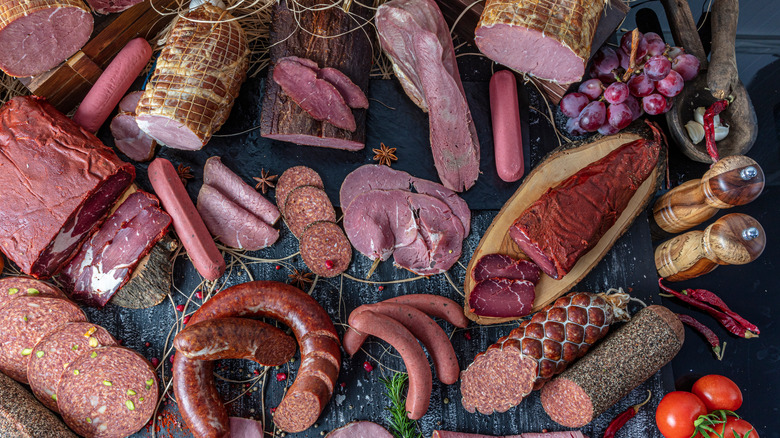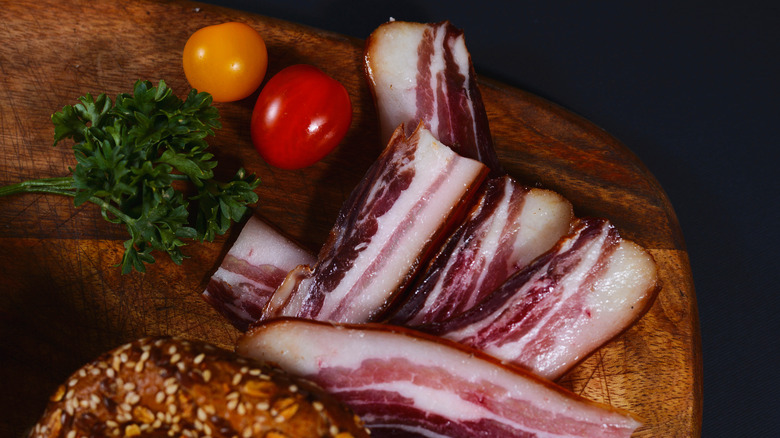What It Means When Bacon Has A Green-Ish Sheen
We typically expect uncooked bacon to be various shades of pink and red, but sometimes this cut of meat can take on more of a green-ish hue. Of course, whenever this happens to be the case, we're left wondering how serious the situation is. Is the bacon still safe to eat, or should we throw it away?
As it turns out, this green sheen is fairly normal, being a result of preservative chemicals like nitrite reacting with myoglobins in the meat. In other words, the nitrite degrades the remaining blood, causing its color to change from red to green.
So, that being said, if your green-ish bacon is well within its best-by date, is properly sealed, and hasn't taken on a slimy texture or strong odor, it's generally still safe to eat. Conversely, if your bacon has taken on a green hue after spending several days in the refrigerator, the color change could be due to fungi or bacteria, and you should throw it away to avoid food poisoning.
Other processed meats may be prone to green coloring
Considering how it's preservatives that cause bacon to take on a green-ish hue, it should come as little surprise that other processed meats can meet the same fate. Roast beef deli meat, for example, commonly takes on a green or iridescent sheen due to chemical reactions during processing. The sheen is further emphasized when the iron contained in the meat absorbs red light and refracts green light back. Cured, smooth, and lighter-colored meats are all more likely to demonstrate this phenomenon solely because they make the refraction more visible.
Interestingly, the green or iridescent hue cannot be cooked off, though cooking can reduce its visibility as the meat darkens as its fibers contract. Again, as long as this color isn't a new development or accompanied by any other signs of potential spoilage, your cured meats should generally be safe to eat. Of course, a good rule of thumb is always to throw the meat out if in doubt.
How to determine if your bacon's color is dangerous
Although a slight green tint to your bacon isn't necessarily concerning, other color changes can be. Similar to how exposure to nitrite can give bacon a green-ish appearance, too much exposure to oxygen can make it turn brown or even gray. Green spots (as opposed to an all-around hue) are also a red flag. These particular color changes signal the growth of fungi or bacterial colonies, neither of which you want to ingest.
If you're still unsure of whether or not your bacon's green tint is dangerous, consider all other aspects of the meat. Sour or sulfuric smells accompany spoilage, as does a textural change from firm to slimy. Bad bacon may even be sticky to the touch.
All in all, bacon should not be kept in the fridge for more than a week or in the freezer for more than four months, as the longer you have it, the more likely it is to spoil. For this reason, you might consider buying bacon only when you intend to use it right away.



